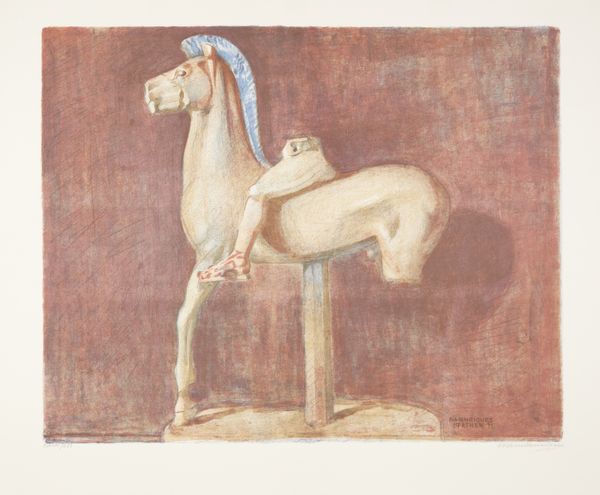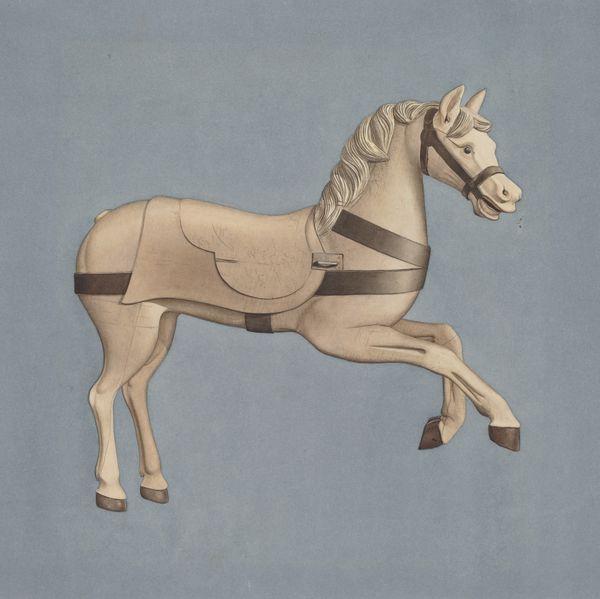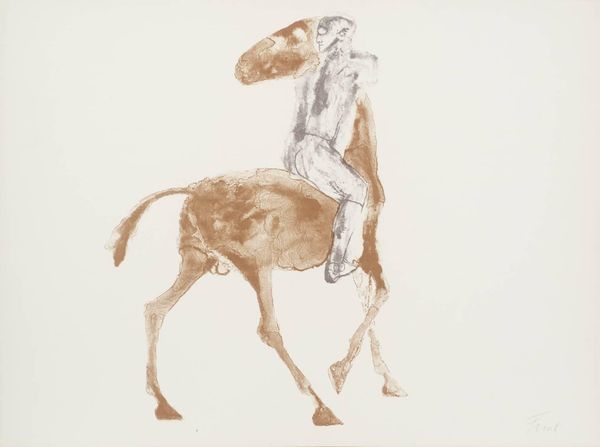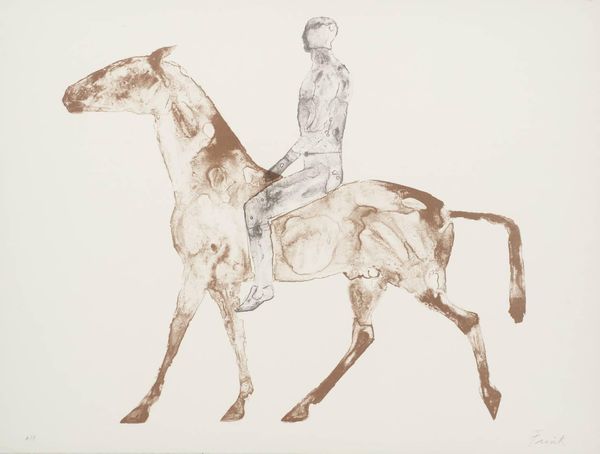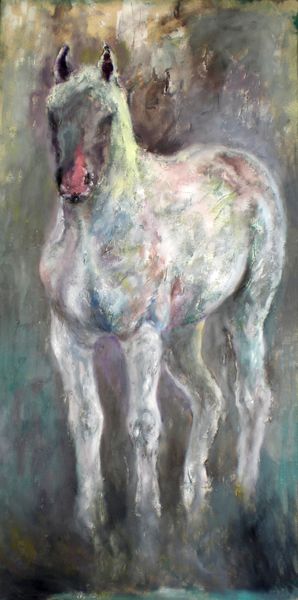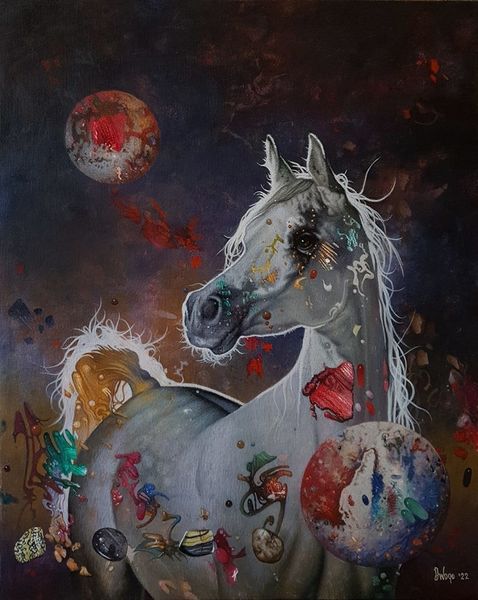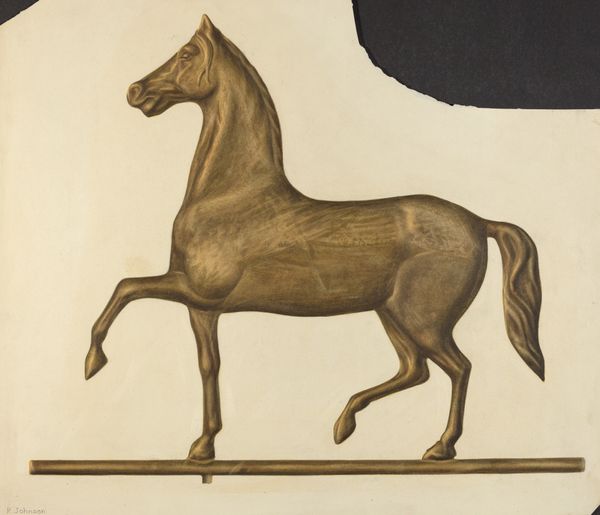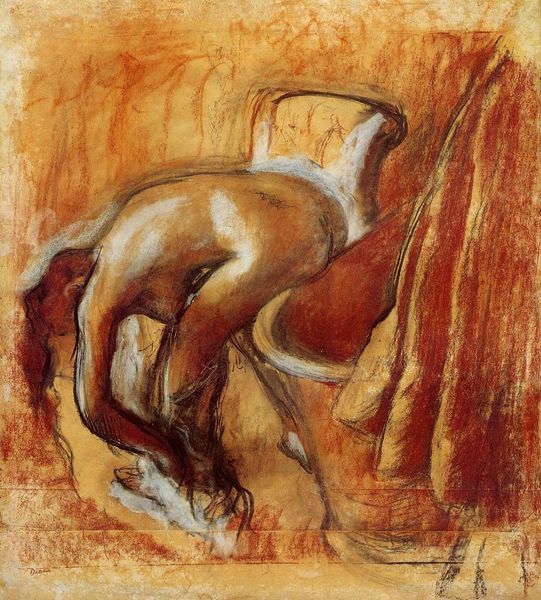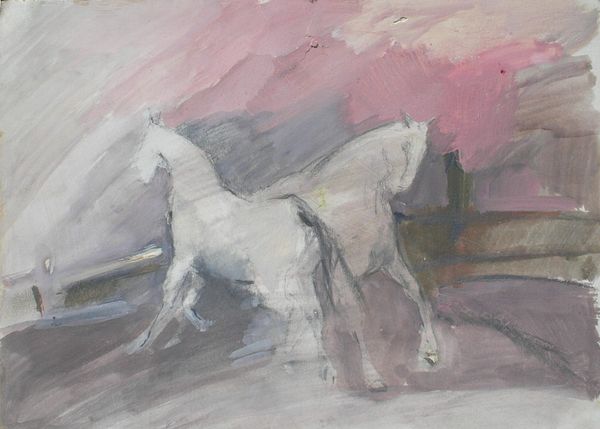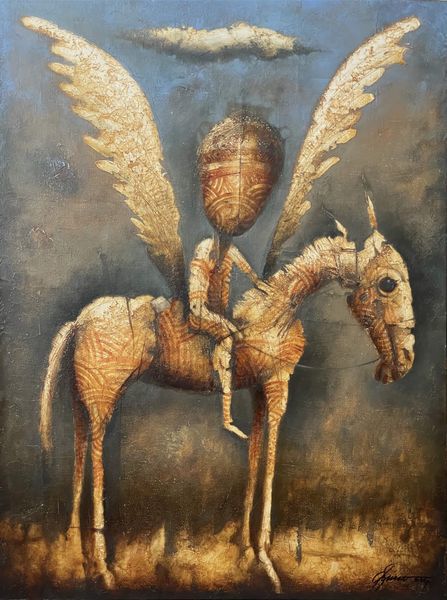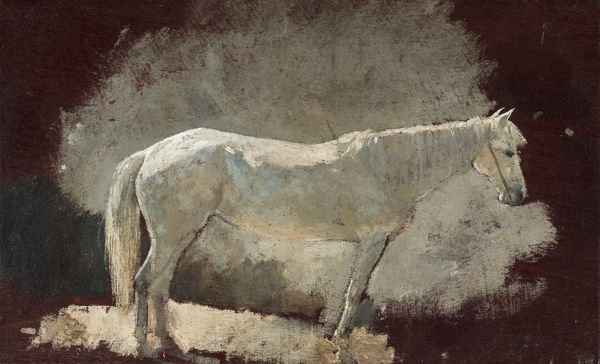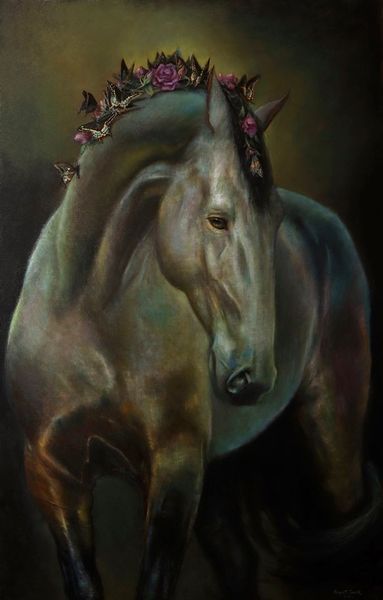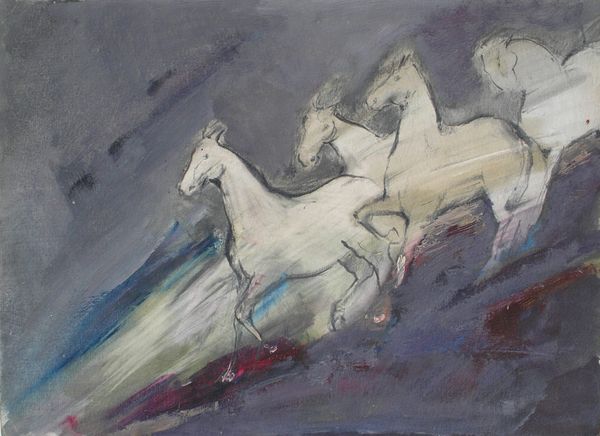
drawing, watercolor
#
drawing
#
charcoal drawing
#
figuration
#
watercolor
#
ancient-mediterranean
#
watercolor
Dimensions: 46.5 cm (height) x 62.5 cm (width) (billedmaal)
Editor: Here we have Marie Henriques’ 1911 work, "Hest med rytter (Akropolis museet inv. 700)," a watercolor and charcoal drawing. The muted tones give it an aged, almost ghostly presence. What do you see in this piece that stands out to you? Curator: The composition is striking. Henriques isolates the horse and rider, abstracting them from their original context. Note the careful attention to line and form, especially in the horse's mane. The subtle interplay between the charcoal and watercolor creates a textured surface that speaks to the materiality of both the drawing and the original sculpture. Consider how the deliberate omission of details encourages the viewer to focus on essential elements. Editor: The missing portion of the rider really emphasizes the focus on form. Is there any significance to this reduction? Curator: Indeed, the fragmentation serves as a crucial formal element. It draws attention to the incompleteness inherent in archaeological fragments and acts as a commentary on time, decay, and our reconstruction of the past. Think about how the formal properties communicate the idea of absence and memory. The choice of the artist to emphasize certain aspects can itself tell its own story. What are your thoughts about that? Editor: It hadn't occurred to me that focusing on what *isn't* there could say so much! It really pushes me to think differently about how art can speak to viewers. Curator: Exactly! Through careful attention to the intrinsic qualities of the art—form, line, color, and composition—we can unlock richer meanings and experiences, focusing on the artistic qualities and theoretical understanding. It is crucial to analyze visual art without necessarily referencing to time and historical context.
Comments
No comments
Be the first to comment and join the conversation on the ultimate creative platform.
